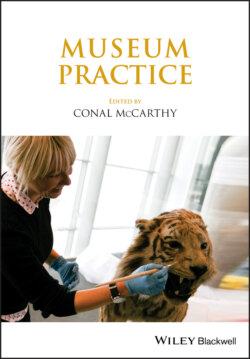Читать книгу Museum Practice - Группа авторов - Страница 37
Museum missions
ОглавлениеThere is a literature on mission in the not-for-profit sector, and a few publications on museum missions (Drucker 1990; Scott, Jaffe, and Tobe 1993; Davies 1999; Lord and Lord 1999; Anderson 2000). In the museum world the importance of mission statements has long been known, though perhaps rather better in US museums than elsewhere. In the United States, the management of “nonprofit organizations” was recognized long ago as requiring specific approaches and skills that are different from those needed in business. “Non-profit institutions exist for the sake of their mission,” wrote Peter Drucker, “They exist to make a difference in society … They exist for the sake of their mission, and this must never be forgotten” (Drucker 1990, 45).
Gail Anderson stressed the point that museums operate in a fast-changing world, and that they must therefore be “agile” (Anderson 2000, v). I have come to realize that remaining agile, by watching social, economic, political, and technological trends very carefully, and molding museum activity to suit new circumstances (trying to anticipate change before it happens), has long been at the core of my own work. This contrasts with the traditional museum approach of keeping one’s head down until things have stabilized so that museums can go back to their “real” work of research, collecting, preservation, and so on. In my view, the constant re-examination needed for museums to remain viable leads inevitably to the requirement for their missions to underpin the change process. The mission statement has to be a lot more than a mere description of the functions performed by a museum, which, Anderson noted, had been common in the sector (2000, v).
Acknowledging that the mission is actually a central and inspirational part of modernizing a museum, and of ensuring it remains relevant, is a key to understanding how change can be brought about in the museum industry. Needless to say, the world outside the museum changes at a faster and faster rate, so the need for museum staff to understand these changes and to keep up with them becomes ever more pressing (Knell, MacLeod, and Watson 2007). Recognizing the need for constant change in museums, and implementing this change, is the most important role of the modern museum director, and a huge challenge for his or her leadership skills (Fleming 1999). Managing change lies at the heart of the contemporary museum.
In this chapter I present two case studies which demonstrate the process of bringing about change, and in which I have been involved over the past two decades. In each case I was the new director of a museum service which was in need of a major overhaul in order to realize its potential. Bringing about sustainable change within these two services was my primary leadership challenge. I felt that my staff and I had to reshape the services so that they had a healthy and productive future. So, I needed to ensure that we re-envisioned ourselves, based upon an agreed set of values, captured in a set of statements that made it absolutely clear within the museum service what we were about, and which also served to announce to the outside world how we saw ourselves.
